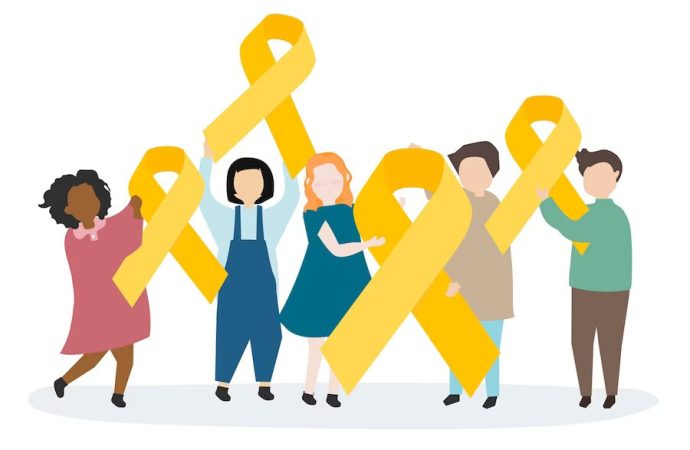Introduction Childhood cancer is a subject that no parent wants to think about. Yet, every year thousands of families face this heart-wrenching reality. As a society, we have made great strides in treating childhood cancers, but there is still much work to be done. In this blog post, we will explore the ways parents, doctors
Introduction
Childhood cancer is a subject that no parent wants to think about. Yet, every year thousands of families face this heart-wrenching reality. As a society, we have made great strides in treating childhood cancers, but there is still much work to be done. In this blog post, we will explore the ways parents, doctors and communities can come together to fight childhood cancer and provide hope for those affected by it. From supporting research efforts to offering emotional support for families dealing with cancer diagnoses – every little bit helps when it comes to fighting this devastating disease. So let’s unite our efforts and make a difference in the lives of children battling cancer!
Childhood Cancer Statistics
In the United States, cancer is the leading cause of death from disease in children under the age of 15. Every year, approximately 15,780 children are diagnosed with cancer and 1,960 die from the disease.
Cancer is not one disease but many, with more than 100 different types that can occur in children. The most common childhood cancers are leukemia (blood cell cancer), brain tumors, lymphoma (cancer of the immune system), rhabdomyosarcoma (a type of soft tissue sarcoma), neuroblastoma (cancer that starts in nerve cells), and Wilms tumor (a kidney cancer).
While childhood cancer rates have been stable over the past few decades, survival rates have increased dramatically thanks to advances in treatment. In the 1960s, only about 20% of children diagnosed with cancer survived for five years or more. Today, that number is almost 80%.
There are many reasons to be hopeful about the future of childhood cancer research. Scientists have made great strides in understanding how cancer develops and grows, which has led to new and better treatments. With continued research, we can continue to improve survival rates and quality of life for children with cancer.
The Impact of Childhood Cancer
Childhood cancer can have a profound impact on the lives of those affected by it. The physical, emotional, and financial tolls of the disease can be significant, and the journey to recovery is often long and difficult. While there is no way to completely eliminate the impact of childhood cancer, there are things that parents, doctors, and communities can do to make a difference.
By working together, we can provide support and resources for families dealing with childhood cancer. We can also raise awareness about the disease and its impact, and work to find new ways to prevent, treat, and ultimately cure childhood cancer.
How Parents Can Help
No parent ever wants to hear the words “your child has cancer.” But, unfortunately, every year thousands of families receive this devastating news. The good news is that childhood cancer survival rates are increasing. In fact, today, more than 80% of children with cancer will survive for at least 5 years.
There are many ways that parents can help their child fight cancer. First and foremost, it is important to be there for your child emotionally. Provide hugs, words of encouragement, and a shoulder to cry on. It is also important to be an advocate for your child. Stay involved in their treatment and make sure you understand all the options available.
You can also help by providing support to other families affected by childhood cancer. There are many organizations that provide assistance to families fighting childhood cancer. You can volunteer your time or make a financial donation to these organizations. By helping others, you not only provide much needed support but you also keep hope alive for all families affected by this disease.
How Doctors Can Help
When a child is diagnosed with cancer, it can be a difficult time for everyone involved. Parents may feel overwhelmed and unsure of what to do, while doctors may feel like they are not doing enough. However, there are things that both parents and doctors can do to help fight childhood cancer.
Parents can play a vital role in their child’s treatment by providing emotional support and helping to make sure they adhere to their treatment plan. They can also advocate for their child, making sure they receive the best possible care.
Doctors can help by providing the latest treatments and research, as well as supporting the family emotionally. They can also refer families to resources and support groups.
Childhood cancer is a difficult journey for everyone involved, but by working together, parents, doctors, and communities can make a difference.
How Communities Can Help
When it comes to fighting childhood cancer, communities can play a big role in helping out. Here are some ways that communities can help:
-Fundraising: Fundraising is a great way for communities to come together and raise money for childhood cancer research and treatment. There are many different ways to fundraise, so get creative!
-Awareness: Raising awareness about childhood cancer is another important way that communities can help. Many people are unaware of the signs and symptoms of childhood cancer, so raising awareness can help more children get diagnosed and treated early.
-Support: Finally, providing support to families affected by childhood cancer is crucial. These families need all the love and support they can get, so reach out and offer them whatever assistance you can.
Conclusion
Fighting childhood cancer is a collective effort that takes courage, resilience, and determination. By bringing together parents, doctors, and communities in the fight against childhood cancer we can make huge strides towards improving treatments and increasing survival rates. We hope this article has given you some insight into how important it is to come together as a community to help our children with this terrible disease. Our future depends on us actively striving for more effective solutions to childhood cancer so that more children can live healthy lives and fulfill their dreams.





















Leave a Comment
Your email address will not be published. Required fields are marked with *